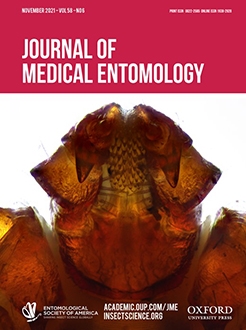Knockdown resistance (kdr) is a common mechanism of insecticide resistance in head lice to the conventionally used pyrethroid pediculosis and can be the result of various amino acid substitutions within the voltage-sensitive sodium channel (VSSC). In this study, 54 sequences from varied specimens were investigated to monitor well-known resistance mutations and probable new mutations. The Pediculus humanus capitis de Geer specimens were collected from 13 provinces in Iran. The specimens were stored in 70% ethanol until DNA extraction and PCR amplification of ∼900-bp fragment of VSSC. The sequences were analyzed using different bioinformatics software for the detection of well-known kdr substitutions and additional mutations potentially associated with kdr resistance in head lice. There were six new and an old (haplotype I) kdr haplotypes within the Iranian head louse population. K794E, F815I, and N818D amino acid substitutions were reported for the first time. The P813H mutation was the most prevalent amino acid substitution in eight provinces. Among 53 sequences, 26 (49%) were homozygous susceptible, and 27 (51%) were heterozygotes. Thus, 51% of the head lice collected in Iran harbored only the P813H allele. The exact test for the Hardy–Weinberg (H–W) equilibrium showed that genotype frequencies differed significantly from the expectation in East-Azerbaijan and Tehran provinces. Moreover, these populations had an inbreeding coefficient (Fis) <0, indicating the excess of heterozygotes. This observation suggests that the populations of head lice from Iran are currently under active selective pressure. For the rest of the populations, H–W equilibrium and the expectations were significantly in harmony. The results of the current study highlight molecular techniques in the accurate detection of resistance genotypes before their establishment within the head louse population. Accurate detection of resistant genotypes seems to be helpful in decision-making on lice control programs and resistance monitoring and management.
Graphical Abstract







